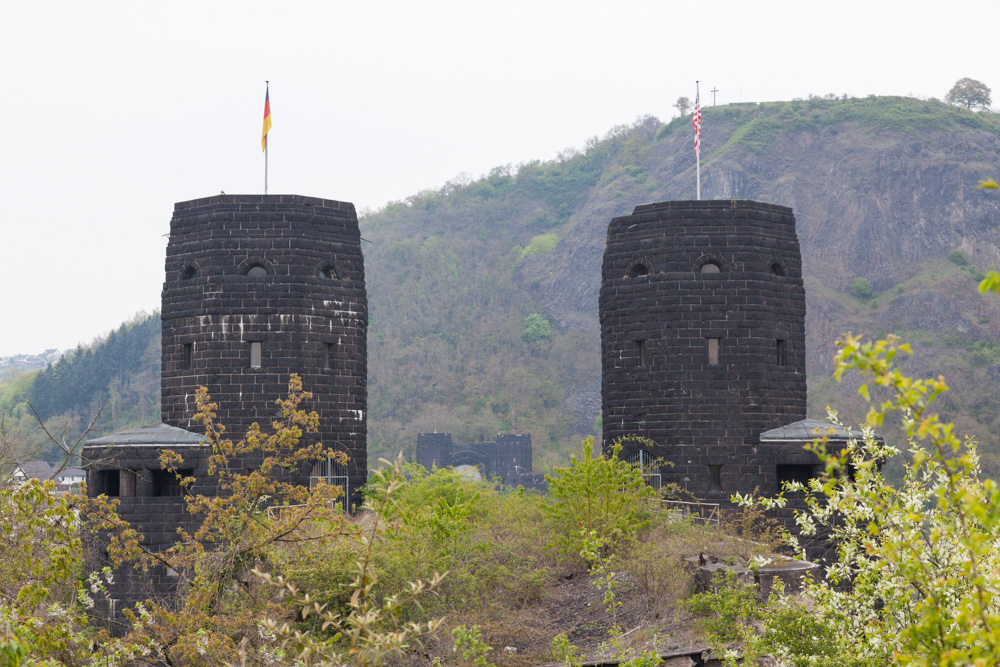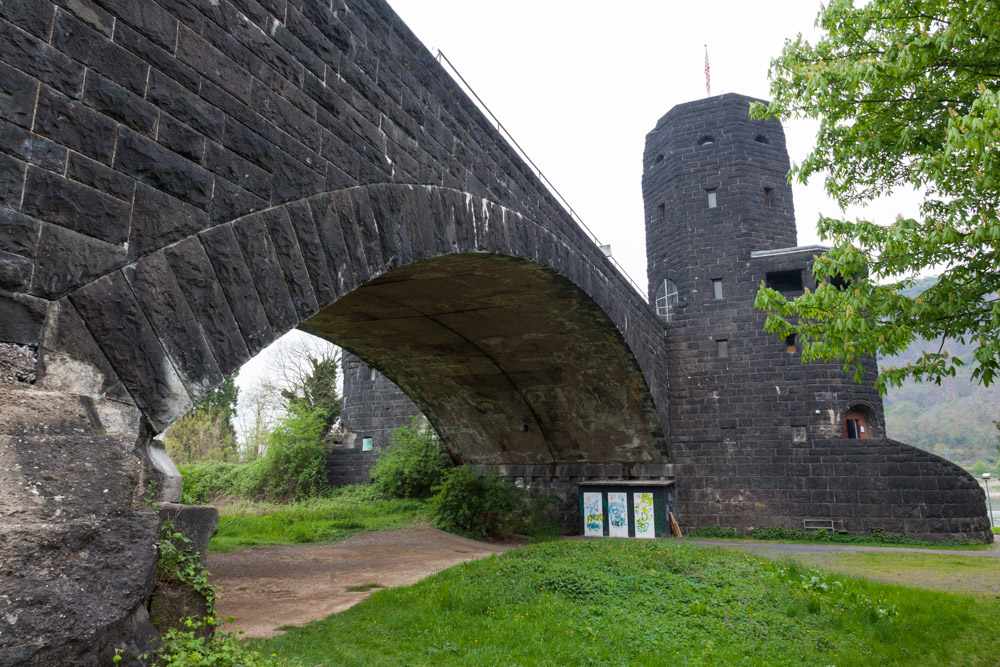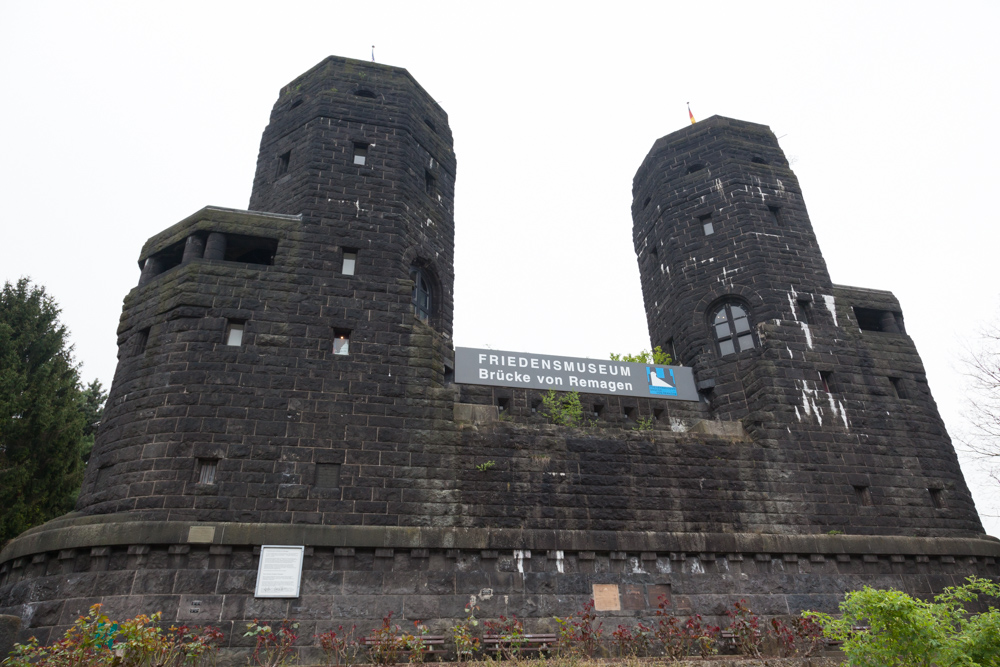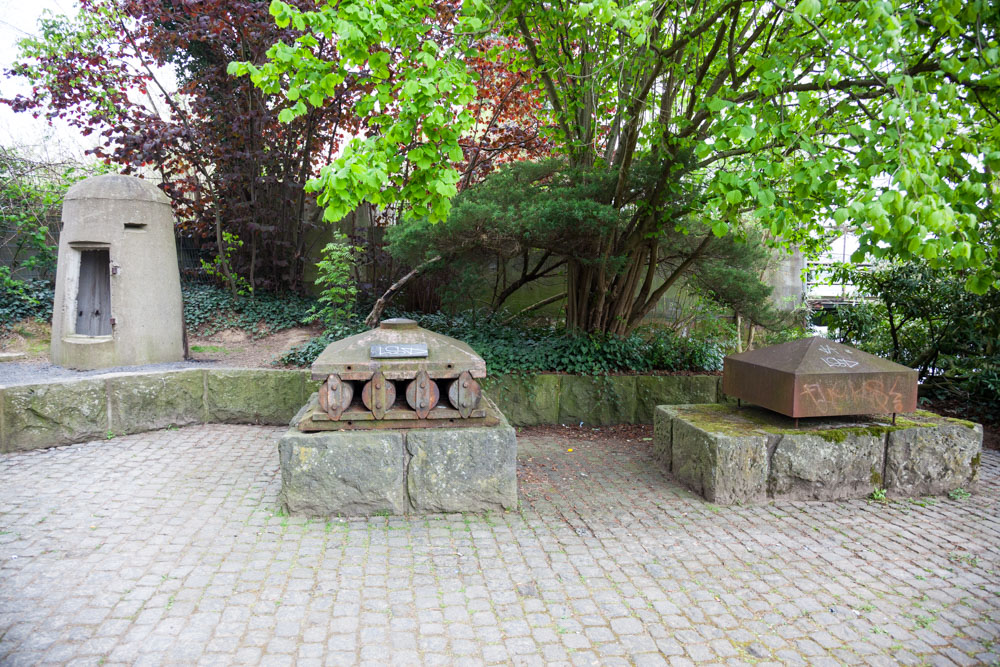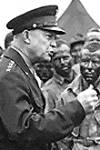Bridge at Remagen
The bridge at Remagen (Lüdendorffbrücke) was built during the First World War at the urging of the German generals, so that more troops and war materials could be brought to the Western Front.
The railway bridge was designed by Karl Wiener, an architect from Mannheim. It was 325 meters long, had a clearance of 14.80 m above the normal water level of the Rhine and its highest point measured 29.25 m. The bridge carried two rail lines and a pedestrian walkway. It was considered one of the finest steel bridges over the Rhine.
On the 7th of March 1945, an advance unit of the 9th U.S. Armored Division, led by LT Karl H. Timmermann, an American of German descent, reached the last intact bridge, just after the German defenders twice failed in their demolition attempts.
The capture of the bridge is known in the annals of the war as the "Miracle of Remagen". General Eisenhower stated that "the bridge is worth its weight in gold". In the days immediately following, the German High Command made desperate attempts to destroy the bridge by bombing and even employing frogmen.
Hitler irately convened a court-martial which condemned five officers to death, four of whom were actually executed in the Westerwald Forest.
On the 17th of March 1945 the bridge collapsed. 28 American soldiers lost their lives.
Do you have more information about this location? Inform us!
Source
- Text: Friedensmuseum Brücke von Remagen
- Photos: Willem Visser (1), Arjan Vrieze (2, 3, 4, 5)
Germany to rebuild bridge over Rhine that collapsed during WW2
Appeal for funds to rebuild bridge at Remagen destroyed after capture by US troops in final days of war
Nearby
Museum
Point of interest
- Railway Tunnel Erpel - Erpel
- V1 Feuerstellung 328 Bruchhausen - Bruchhausen
- Schloss Drachenburg - Adolf Hitler School - Königswinter
Monument
- Plaque This Time in Peace - Lest we Forget - Erpel
- Plaque Peace without freedom is no peace - Erpel
- Peace Cross Erpeler Ley - Erpel
Cemetery
- Former Remagen Old Cemetery - Remagen
- Restored Jewish Cemetery Unkel - Unkel
- German War Cemetery Bruchhausen - Bruchhausen

